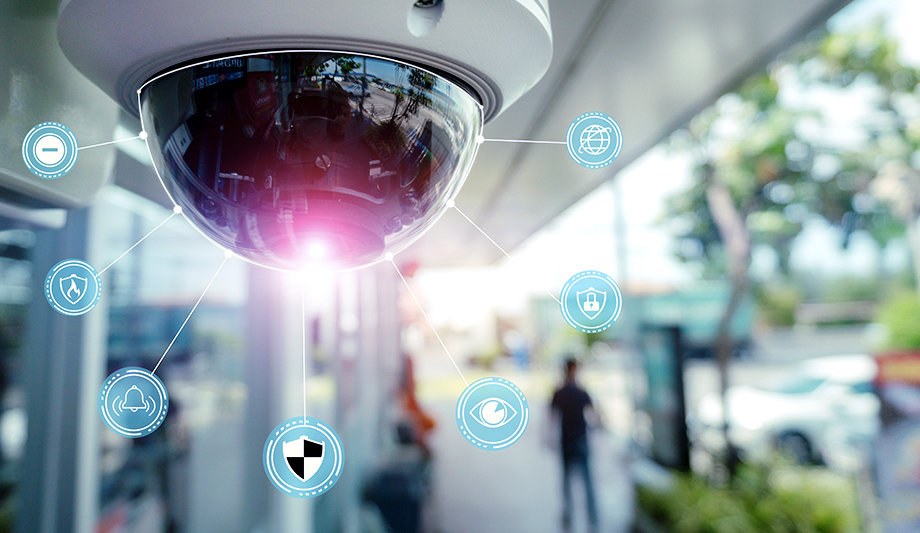What’s New “on The Edge” Of Security And Video Surveillance Systems?
Editor Introduction
By definition, an edge device is an entry point to a network. In the physical security industry, edge devices are the cameras, sensors, access controllers, readers and other equipment that provide information to the IP networks that drive today’s systems. In the Internet of Things (IoT), edge computing refers to an increasing role of edge devices to process data where it is created instead of sending it across a network to a data center or the cloud. In our market, edge computing takes the form of smarter video cameras and other devices that store and/or process data locally. We asked this week’s Expert Panel Roundtable: What’s new “on the edge” of security and video surveillance systems?
As more powerful in-camera chipsets are developed, edge devices are capable of even more powerful analytics that can inform operators in real-time of events requiring attention. Part of this significant evolution is from a form of artificial intelligence (AI) called deep learning. Deep learning takes machine learning to a new level based on neural network theory that mimics the complexity of the human brain. Previously only available as a server-side process which would require video to be decompressed and processed, algorithms and companion data sets created from deep learning can be embedded on the edge to perform real-time detection and alerts for the specific conditions they have been trained to recognize. On-the-edge devices cannot continue to self-learn, but they can provide a useful function for recognizing known objects or behaviors. Still in its infancy, this technology will take in-camera analytics to a new level for security and retail use cases.
Embedded artificial intelligence on the edge is a hot topic right now, and I suspect it will continue to be an area of interest to the market. When a security system utilizes AI, it typically requires a large-scale application, with connections to hundreds of devices. With some level of AI processing functionality on the edge, it will enable the back-end server to load more quickly, and will also provide prompt, real-time analysis to users from the edge device and alleviate the headache of connecting hundreds of devices.
Advances in AI plug-ins within video surveillance systems will continue to move forward. As more data points become available to be monitored, these smart integrations of license plate recognition (LPR), facial recognition, anomaly detection and others are becoming more refined and proving to increase accuracy and reduce response times that better help organizations manage their overall security landscape.
Undoubtedly facial recognition technology is “on the edge” of the security and video surveillance sector. Once the stuff of sci-fi, AI and enhanced camera/screen resolutions have made it a practical reality. The applications are seemingly endless. The obvious application is tracking criminals or suspects across a wide area or highly busy environments (such as airports, stations and any other crowded places where people gather). There are also more humanitarian applications, such as finding a missing child or vulnerable adult across a dispersed area. Increasingly AI is going beyond just facial recognition – walking gait analysis has been a reality for a number of years. As sensors and cameras continue to improve in their accuracy, we can expect to see systems that can detect the most seemingly subtle of clues – such as the heat signature of the body or even sounds, such as voices or walking/breathing, which can all be unique.
In short, the answer is "functionality." That is, edge devices – such as cameras, speakers, access controllers and readers, network-connected sensors and other IoT devices that are at the "edge" of the network – are becoming more functionally capable. Edge functionality encompasses running video management and audio applications, analytics, networking, storage and more. With an increased amount of capability comes more possibilities with regards to applications running in the devices and applications based on correlating data from different devices. Intelligent edge devices can also communicate with each other over the network, increasing integration between sensors and creating a more cohesive approach to the management of these devices. The cloud is increasingly being used to connect and manage these devices. And while cybersecurity is not new, the proliferation of edge devices on the network brings a new level of urgency to it.
Security remains a primary need, but video surveillance systems can fulfill much more than that. Organizations often want to create more value out of their investment. To bring it one step further and get into the operations and business intelligence, new technologies are being incorporated with existing security systems. Edge devices can not only protect, but also provide insights into their environment. Intelligent capabilities such as video analytics and correlation engines augment the value of video surveillance installations. Maintenance and routine tasks can be automated, so operators focus on value-added duties, and respond to critical situations more rapidly. Everyone wants smarter data, and that data needs to be structured. We’re slowing moving away from traditional monitoring with list of cameras, towards a map-based experience with dashboards and widgets. This provides a rich and dynamic view of security and business environments, allowing organizations to do more with video.
Video surveillance has been around for years and is foundational to a building’s overall security strategy. However, in today’s technology-driven world, video means more than traditional cameras, as integration capabilities have transformed the video surveillance market. Now, video surveillance tools, like IP and PTZ cameras, are being integrated beyond security systems like access control and mass notification, to building systems such as lighting and HVAC controls. It’s important to work with an integrator to fully understand your building’s potential for connecting these systems. With the proper guidance and network infrastructure in place, the integration of video surveillance with other business systems can help create a more efficient, sustainable and secure building environment.
Editor Summary
Artificial intelligence (AI) comes up frequently among our Expert Panelists' descriptions of what's happening "on the edge" of today's security networks. AI is the latest development in the move toward processing of data near where it is created – at the edge. A couple of our respondents also hinted at a more abstract interpretation of "edge," as in leading edge (or bleeding edge). All the responses highlighted developments that will have a huge impact as they make their way into real-world solutions.
- Related links
- ANPR Software Video Surveillance software
- Megapixel IP cameras
- Detection Software Video Surveillance software
- IP Surveillance Software Video Surveillance software
- Management Software Video Surveillance software
- Surveillance Software Video Surveillance software
- Dahua Technology Video Surveillance software
- Genetec Video Surveillance software
- Hanwha Vision Video Surveillance software
- Oncam Video Surveillance software
- TDSi Video Surveillance software
- Dahua Technology IP cameras
- Genetec IP cameras
- Hanwha Vision IP cameras
- Oncam IP cameras
- TDSi IP cameras
- Dahua Technology Network Video Recorders (NVRs)
- Genetec Network Video Recorders (NVRs)
- Hanwha Vision Network Video Recorders (NVRs)
- TDSi Network Video Recorders (NVRs)
- Dahua Technology Storage
- Related categories
- Video Surveillance software
- IP cameras
- Network Video Recorders (NVRs)
- Storage
Expert commentary
Security beat
Security bytes
- Getting To Know Dan Grimm, VP And General Manager Of Computer Vision At RealNetworks
- Big Wins And The Importance Of Showing Up: Insights From SecurityInformed.com Editor Larry Anderson
- Setting Goals, Business Travels And Radioactivity: Success Secrets From Tiandy's John Van Den Elzen
- Getting To Know Jeff Burgess, President/CEO At BCDVideo
Multi-Residential Access Management And Security
DownloadGuide For HAAS: New Choice Of SMB Security System
DownloadPrecision And Intelligence: LiDAR's Role In Modern Security Ecosystems
DownloadHikvision: Solar Powered Product Introduction + HCP
DownloadFacial Recognition
DownloadVerkada TD52 Cloud-Based Video Intercom
exacqVision IP08-64T-R1XW-E X-Series 1U Rdnt IP NVR 64TB RAID5 Windows OS with 8 IP Ent Lic
Climax Technology TouchPanel-3 7” Color Graphic Touchscreen Panel






















